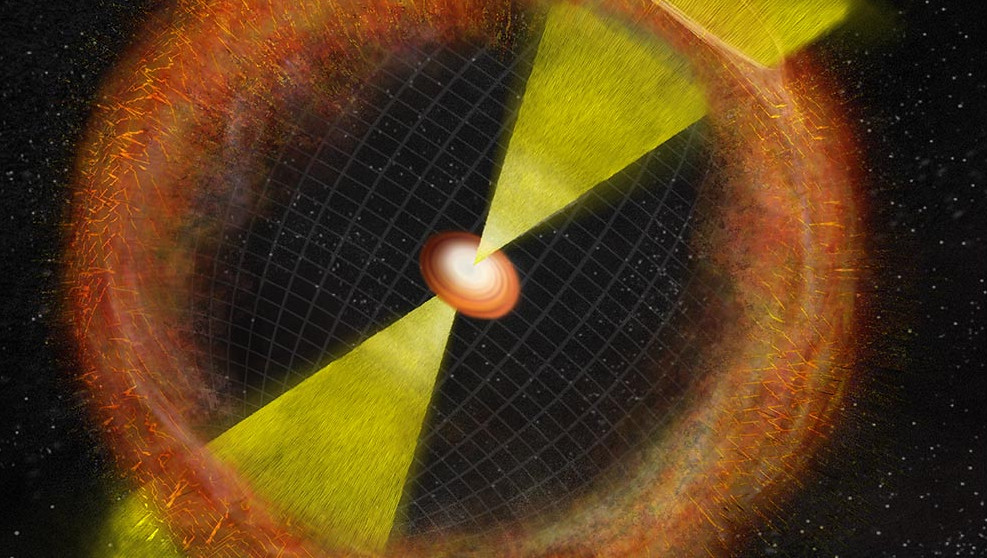It has been 1,000 days since scientists witnessed the explosive birth of a black hole by capturing light emerging from the event, and to their amazement, they are still detecting X-rays in the afterglow of the explosion, marking a milestone in astrophysics research.
Scientists had not expected to find X-rays still radiating from the explosion’s afterglow after so much time, as models predicted they would by now have faded below the level of detection, along with optical and radio emission. The reason for the persistence of X-rays remains unknown.
The black hole appeared in August 2017 after two super-dense (‘neutron’) stars merged, causing a massive explosion. The explosion triggered a sudden jolt in spacetime, emitted a short burst of gamma-rays, launched a jet of gas at near light-speed velocities, and expelled a shell of debris dense enough to synthesise gold along with other heavy metals not produced on earth or in the sun.
By observing the event and measuring the gravitational waves that propagated outward from the source of the explosion (a first observation for humankind), astrophysicists were able to confirm both the existence of star-sized black holes and the astrophysical origin of the short gamma-ray bursts that satellites have been detecting occasionally for decades. The study of this unforgettable event is ongoing, with physicists from the University of Bath and around the world using this as an opportunity to deepen their understanding of the cosmos.
Dr Hendrik Van Eerten, a theoretical astrophysicist at Bath who has been investigating the star merger for the past three years, said: "We have now achieved a milestone in observational astronomy, in that we are still managing to detect and extract information from the fading source of the explosion a full thousand days after the event.”
Observations of the explosion’s afterglow were made from the Chandra X-ray Observatory satellite and are described this month in the Monthly Notices of the Royal Astronomical Society. They have helped scientists understand:
- The way ultra-energetic gas flows through the near-absolute vacuum of space, which sheds light on the fundamental physics of charged gases and the acceleration of charged particles in shock waves under extreme conditions – something that cannot be replicated in a laboratory on earth.
- How intergalactic explosions shape the production of heavy metals, including gold.
- The manner in which X-rays, optical emissions and radio emissions persist after an intergalactic explosion.
Dr Van Eerten, who is one of the main authors of the paper, said: "By still being able to capture X-rays from the fading shock wave at 1,000 days following the explosion, we are now fully able to confirm the actual structure of the enormous jets of gas expelled when two neutron stars merge, and to witness for the first time how such a jet finally dissipates and merges with any slower-moving debris from the explosion."
He added: “The late-time observations both confirm the key points of the computer models from our team about near-light speed gas flow and begin to offer fascinating hints for a new sort of emission emerging only at late times, which in a way means we get to have our cake and eat it: vindication on the one hand, something previously unrevealed on the other."
Dr Eleonora Troja, associate research scientist at NASA Goddard and in the Department of Astronomy at the University of Maryland in the US and lead author of the paper, said: “We are entering a new phase in our understanding of neutron stars. We really don’t know what to expect from this point forward, because all our models were predicting no X-rays and we were surprised to see them 1,000 days after the collision event was detected. It may take years to find out the answer to what is going on, but our research opens the door to many possibilities.”

